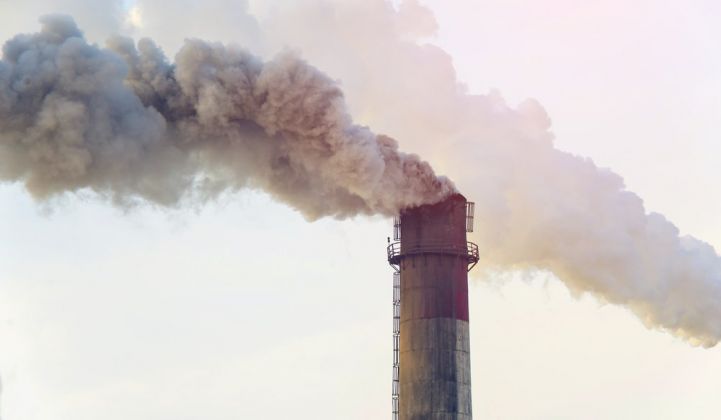European Union carbon emissions grew 1.8 percent in 2017 despite a 25 percent increase in wind power and 6 percent growth in solar, figures show. The European statistics body Eurostat this month reported that carbon dioxide emissions rose last year in a majority of EU member states.
The best-performing countries were Finland, which cut emissions by 5.9 percent, and Denmark, which posted a 5.8 percent decrease.
Germany, which is by far Europe’s largest polluter, accounting for 23 percent of emissions, also managed to improve its performance, but just barely. Germany posted a 0.2 percent improvement on 2016 levels of carbon dioxide.
The EU’s second-largest emitter, the U.K., also managed to cut its carbon dioxide output, by a respectable 3.2 percent. But Italy and France both posted a 3.2 percent rise, increasing their share of emissions to 10.7 percent and 10 percent, respectively.
The highest increases were for Malta, which went up 12.8 percent, Estonia, with 11.3 percent, and Bulgaria, with 8.3 percent. Despite the rises, these three nations only accounted for just over 2 percent of total carbon dioxide emissions in the EU in 2017.
Arguably one of the biggest carbon culprits in 2017 was Spain, which saw emissions levels going up by 7.4 percent to take a 7.7 percent share of all the carbon dioxide in the EU.
Despite having excellent solar, wind and hydro reserves, Spain has suffered from a poor regulatory environment for renewables in recent years.
Over the last decade, the government has imposed curbs on small-scale renewable development and introduced regulatory uncertainty for large-scale projects, only recently reviving developer hopes with a series of major auctions aimed at meeting EU targets.
The projects arising from these have yet to come online, though. In the meantime, figures from grid operator Red Eléctrica de España show the proportion of renewables, as a share of total energy demand, dropped from 42.8 percent in 2014 to 33.8 percent in 2017.
In total, 20 EU member states saw emissions rise in 2017, while only seven managed to cut their carbon dioxide output. Eurostat said the Swedish data was still under revision, so it was not included.
The net rise in emissions, attributed to economic growth across much of the EU, illustrated how hard it will be for the bloc to achieve its target of cutting carbon to 40 percent below 1990 levels in 2030 and progressing to 60 percent by 2040.
Last year saw EU member states adding a record 15.6 gigawatts of wind power and 340 megawatts of solar. Wind represented 55.2 percent of all new power generation installed in 2017, with solar making up a further 21.3 percent.
In contrast, new gas plants accounted for just 9.2 percent of capacity additions, and coal was a further 6.1 percent. Despite this, “the reduction of emissions blamed for climate change remains a challenge,” reported Reuters.
Molly Walsh, renewables campaigner at Friends of the Earth Europe, said the figures showed that the EU Emissions Trading System (ETS), the first and currently biggest greenhouse gas emissions trading scheme in the world, was not doing its job.
“This worrying rise in emissions shows that while renewables continue to grow, the most polluting energy sources are not being eliminated quickly enough,” she said.
“These figures demonstrate the ETS is not functioning as a mechanism to deliver the fossil-free future Europe needs, and should not be relied on," said Walsh. "Europe only has five to nine years left of current emissions levels if we want to limit warming to the 1.5 degrees considered safe."
An analysis of ETS figures by Sandbag, a Brussels and London-based not-for-profit climate change policy think tank, determined that the increase in emissions across the EU was largely due to greater use of lignite to fuel industrial growth.
“For the first time, lignite emissions overtook hard coal emissions,” said Sandbag.
With electricity demand rising in many countries, even the breakneck deployment of wind and solar was not fast enough in 2017 to reduce the need for lignite generation, it claimed.
“The build-rate of wind and solar is not high enough to sustain falls in power sector emissions, especially as electricity demand increases and nuclear plants close,” it said.




